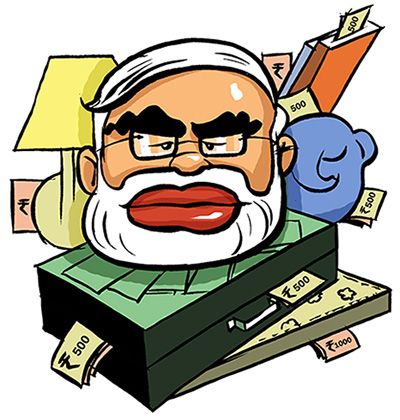 | « Back to article | Print this article |
There are tell-tale signs of a slide in the quality of Budgets presented by the current administration, says Parthasarathi Shome.
Illustrations: Uttam Ghosh/Rediff.com
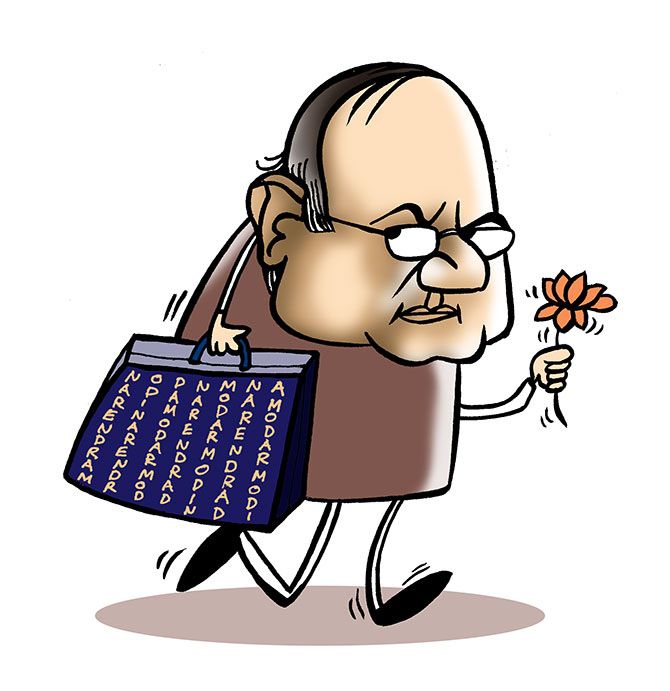
Union Budgets are forgotten quickly.
Nevertheless, it should be interesting to test by comparison and contrast this government’s Budgets thus far. Were they consistent; or did they intensify or abandon earlier goals, shifting policy stance?
With this in mind, I consider selected aspects from the 2015-16, 2016-17, and 2017-18 Union Budgets.

Budgets: A quick look
The primary concerns in Budget 2015-16 were to address negative aspects of taxation introduced during 2009-12, that had led domestic and foreign investment decisions away from Indian shores.
Various retrospective amendments had sunk India into a global depth as a poor place to invest.
The government that had coined the term ‘tax terrorism’ when in opposition, rightly made announcements in the tax area that were reassuring and promising; they added that the recommendations of the Tax Administration Reform Commission would be implemented during the year.
Budget 2016-17 shifted focus, claiming high GDP growth despite a crash in exports and zero growth in the non-financial non-oil sector.
It was also declared that farmers’ incomes would be doubled in five years, an impossibility.
Yet there was no statement about the earlier promised Minimum Support Price of 50 per cent above cost.
In essence, the benign objective of a shift towards the farmer did not stand on firm ground.
Another aspect was the allocation of Rs 25,000 crore for the recapitalisation of banks.
Budget 2017-18 was noteworthy in two respects -- first for the undependability of its GDP statistics, with its sectoral components drawing the attention of several commentators and, second, for the non-mention of tax administration reform, thus, revealing a fundamental shift in policy stance.
Indeed, soon thereafter, a stringent search and seizure approach to tax collection was announced, standing apart from TARC’s internationally benchmarked approach and recommendations.
Further, the claims made about GDP growth failed to reflect the economic environment reported in the Economic Survey.
Third, the government allocated Rs 10,000 crore for bank recapitalisation, an amount lower than the previous year and less than the calculations of needs.
It must be recognised, however, that justification for recapitalisation is not easy, given the profile of defaulters being heavily weighted towards a newly emerged, unrepresentatively wealthy, economically unproductive and socially exploitative class.
Rather, the question should be, why do banks lend to them and why should they not bear the cost themselves?
On one hand, there is uncertainty in statistics; on the other, there is perfect matching of target with turnout of the fiscal deficit -- 3.9 per cent of GDP in 2015-16, 3.5 per cent in 2016-17, and set at 3.2 per cent in 2017-18.
Also interesting are the higher turnouts than budgeted of tax/GDP ratios: 10.3 per cent budgeted versus 10.8 per cent turnout in 2015-16, 10.8 per cent versus 11.3 per cent in 2016-17, and set again at 11.3 per cent in 2017-18.
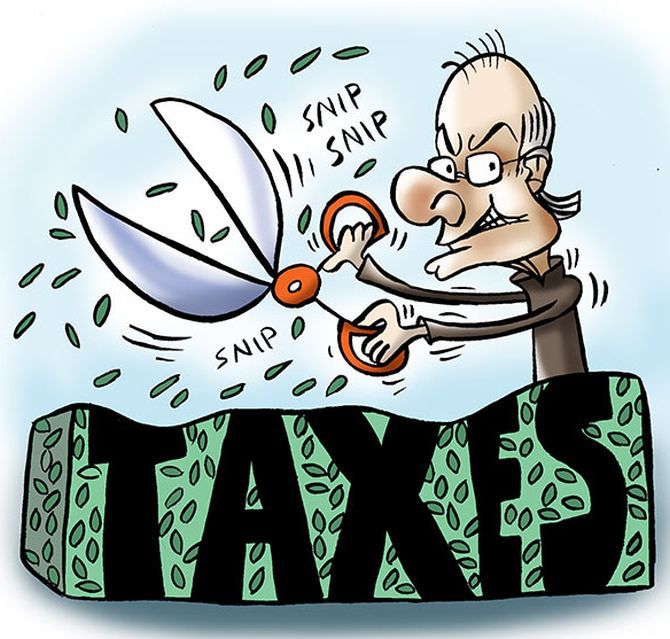
Income tax
Coming to income tax structure, Budget 2015-16 promised a reduction in the corporate income tax rate to 25 per cent (in consonance with higher expected revenue from GST) and abolition of wealth tax that yielded insignificant revenue.
Focus on tax incentives for investment in infrastructure was a positive change.
However, the finance minister stated that the Direct Tax Code was being dropped on the grounds that most DTC proposals were already incorporated in the Income Tax Act. This was a tactical error since it was far from reality.
By Budget 2016-17, a slide had begun with the introduction of another tax amnesty scheme and an absence of the promised CIT reduction path.
Yet Budget 2017-18 improved the tax policy stance in selected aspects, comprising a reduction in the CIT rate to 25 per cent for 96 per cent of return filing companies, where the other four per cent larger companies already enjoy lower effective tax rates.
MAT loss carry-over was extended from 10 to 15 years, thus improving the ability to even out tax payments and also enhancing MAT’s acceptability.
However, there were several non-salutary elements, including changing the long-term capital gains definition from three to two years, and reducing the individual income tax rate from 10 per cent to five per cent for the Rs 2.5-5 lakh bracket, a popular, electorally timely gesture.
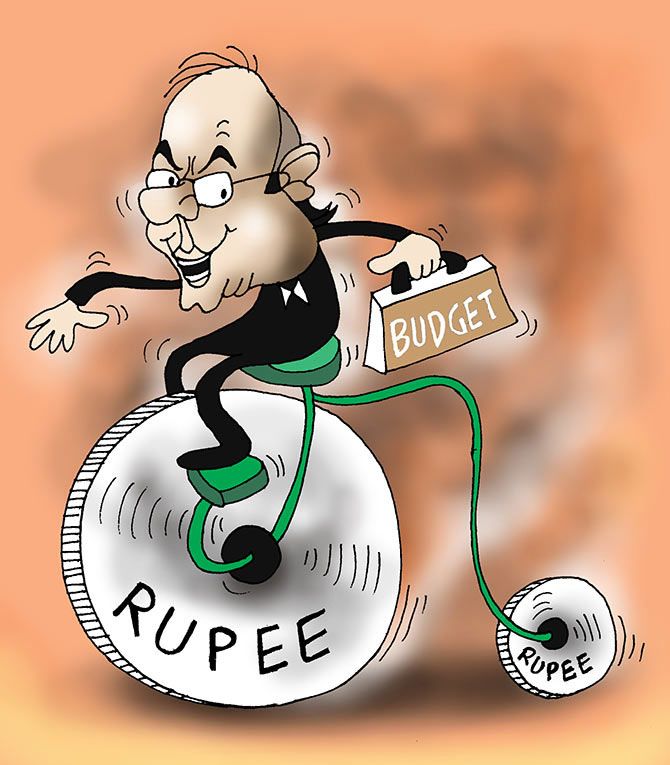
Tax policy details
In tax policy details, Budget 2015-16 attempted to reduce uncertainty by focusing on various issues.
It postponed the General Anti-Avoidance Rules for another two years and indicated prospective application.
The FM announced that the taxation of indirect transfers of India-based assets that take place abroad will be addressed by CBDT through a clarificatory circular. The introduction of GST in 2016 was also announced.
Yet Budget 2016-17, rather than fundamental reform, introduced distortions to make up for tax revenue loss, thus tripling Security Transaction Tax on options, giving profit-based incentives for start-ups, tinkering with rules and duties, and projecting heavy dependence on non-tax revenue to achieve the fiscal deficit target.
The budgeted Rs 56,000 crore from disinvestment was a target never achieved earlier.
However, Budget 2017-18 undertook small corrections such as removing the taxation of indirect transfers by foreign portfolio investors.
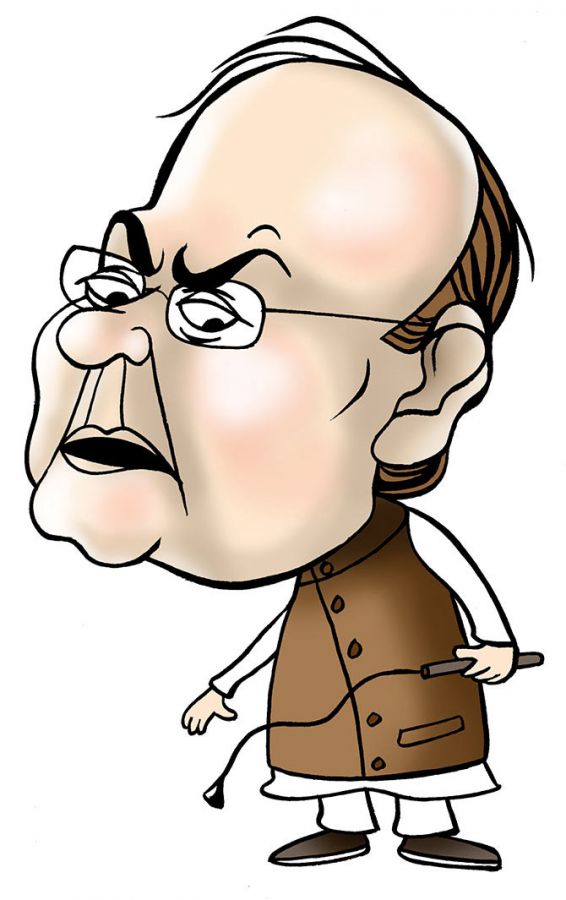
Tax administration
Regarding tax administration, in Budget 2015-16, while the finance minister mentioned that the TARC recommendations would be implemented, no road map was given.
In the following Budgets, little meaningful reference was made to TARC.
Instead, by Budget 2017-18, no mention was made of officer training for GAAR application from April 1 in spite of earlier adverse experience with transfer pricing application by the tax department when judged internationally.
Soon after, the government published new search and seizure rules that minimise taxpayer rights and basically moves distinctly away from TARC recommendations.
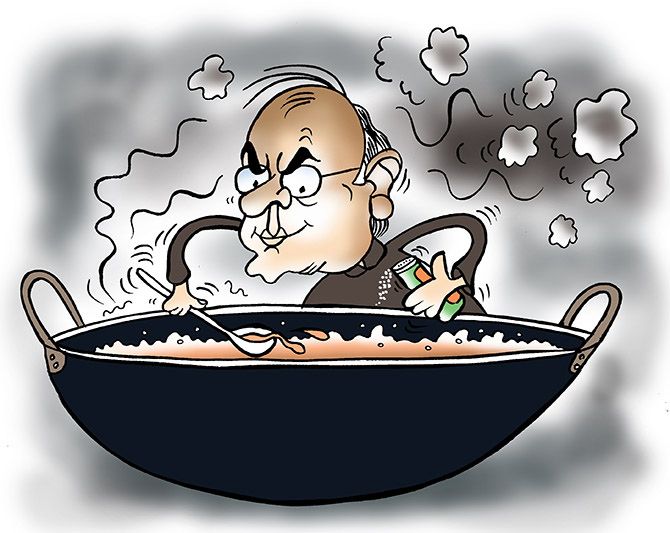
Conclusion
If broad conclusions are to be drawn, the first Budget indicated good policy intentions in tax and expenditure areas.
This was followed by an observable erosion in Budget 2016-17.
The worsening was somewhat corrected in the latest 2017-18 Budget.
However, a shadow has appeared regarding the reliability of GDP and accompanying numbers.
Perhaps somewhat relatedly, India’s position has not improved during the new government in the World Bank’s index of Ease of Doing Business (130/131 out of 190) or Ease of Paying Taxes (172 out of 190).
Thus, if the prime minister’s just declared 2022 Vision for the poor and middle class is to be realised, it has to seek new trajectories over and above the Union Budget process.
